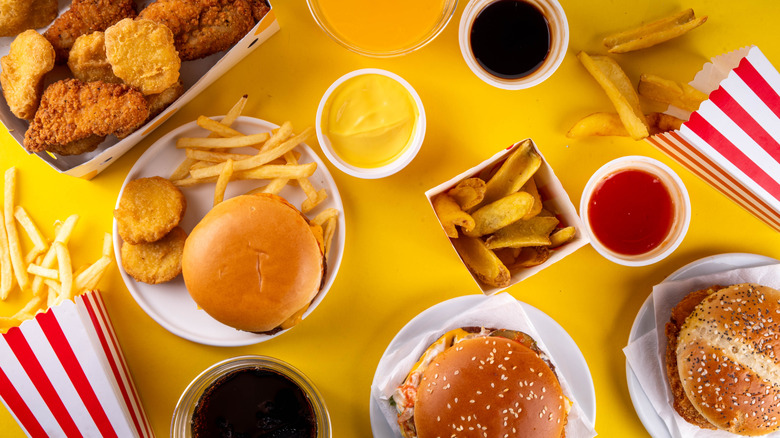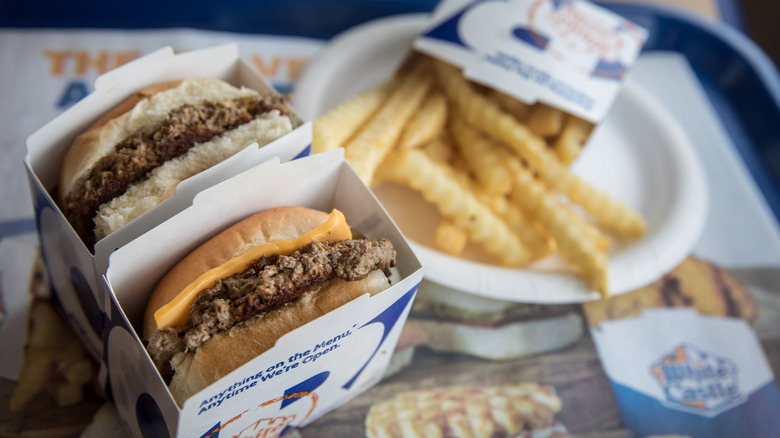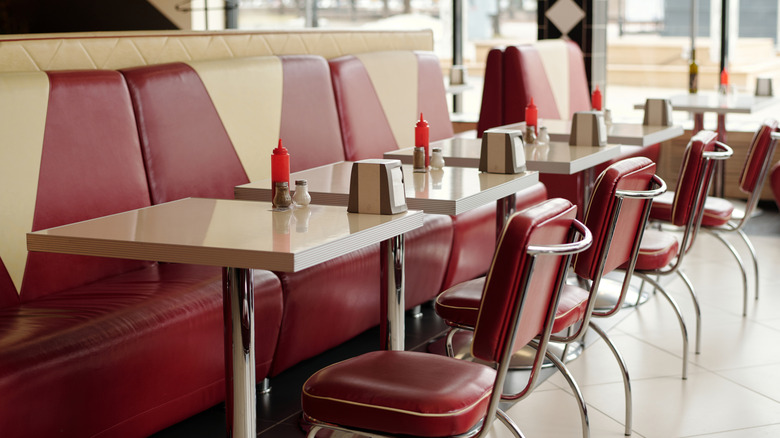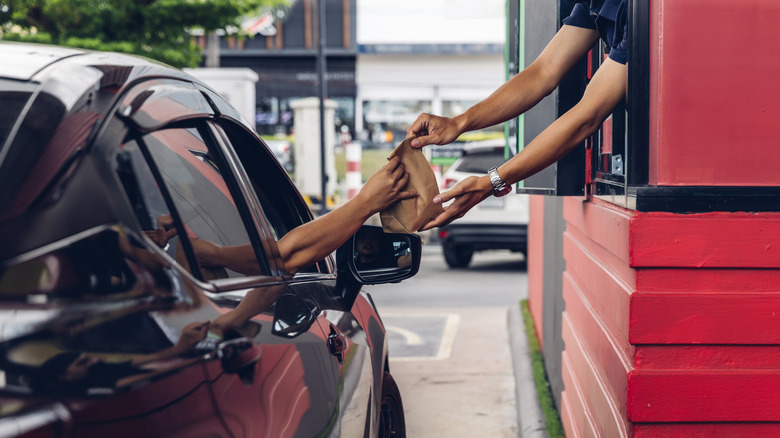How Highways Fueled The Rise Of Fast Food Across America
Fast food has existed for thousands of years in some form or another. As far back as Ancient Rome, stalls known as thermopoliums sold food to people passing by on the street outside. While the ubiquity of fast food has waxed and waned over the centuries, with sit-down restaurants and coffee houses taking precedence at times, the desire to grab a quick bite and go has always been there.
That being said, the United States has taken the fast food game to a whole new level over the last hundred years, boasting the largest fast food industry in the world. In 2022, it was valued at over $382 billion, per Statista, which was about a third of the global fast food industry at the time. The CDC has said that 36.6% of adults in the United States consume fast food on any given day. While the industry had been growing in popularity before the birth of the modern interstate highway system, the two have worked together in synergy for decades to help change the way that American ate while, when they ate, and what they prioritized when eating while traveling.
American fast food before the interstate system
Fast food in the United States as we would recognize it today was really born in the 1920s. While there are various claims to the title of "first fast food restaurant," the archetypal chain most widely accepted is White Castle, the burger joint famous for its square sliders. The chain made decent food cheaply and efficiently in a way that was fresh and new for the era. A major aspect of White Castle's success was that it helped to rebrand the idea of a hamburger. Prior to their proliferation, burgers had a reputation for being made from cheap or spoiled meat scraps, and were food sold at fairs and circuses, not weeknight family dining establishments. By providing better quality food and, crucially, making the preparation and cooking areas visible to customers, White Castle was able to challenge that notion.
When the first McDonald's opened in California in the 1940s, the restaurant worked to perfect the model that White Castle had created. While these sorts of fast food chains started to become more popular and refined their operations, they were still limited in their presence in American life. Fast food restaurants were primarily located in suburban areas and were particularly successful in the Midwest. But the interstate highway system opened a grand opportunity for the growth of American fast food in the 1950s and 60s.
The interstates changed what travel food looked like
Prior to the implementation of President Dwight D. Eisenhower's interstate system in the 1950s, the landscape of towns in the United States looked very different. Small towns were often located on railway lines and the surrounding communities relied on the traffic generated by the rail lines to exist. Long-haul truck drivers traveling on two-lane highways typical of the old interstate system would stop in at towns like these and come to know the local food. If you were on a road trip, following such a truck driver would be a reliable way of finding a good place to grab a bite.
When the expanded interstate system was created, these new roads often bypassed the small towns that had previously been the pit stops of the long-distance driver. With the old mom-and-pop diners not only a secret to the well-travelled, but also more inconvenient to get to, requiring extensive detours, smaller towns and local restaurants started to struggle. In turn, the new interstate exits and interchanges left space for fast food chains to take advantage of hungry but hurried travelers.
As the interstate system took hold and car culture evolved, so too did American eating habits. Many consumers bought into the idea of keeping moving rather than taking longer stops at roadside restaurants like Howard Johnson's, and fast food chains were more than happy to accommodate. Chains began to move away from carhops, servers who would wait on you while you ate in your car, and the standard service model became that you grabbed your food and kept driving.
Why fast food thrived around the United States' interstates
Fast food was so successful around the interstate system for multiple reasons. Convenience was a major factor. Being able to pull off and grab gas and food in one quick stop was hard to beat when you still had a long way to go, whether you were riding by yourself or wanted to feed a whole family cheaply. While many fast food chains started in California, they thrived in the Midwest, because if you were going to drive a long way across the United States, you'd probably pass through the region sooner or later. The synergy with gas stations is evident in KFC's own genesis, as the chain's founder Colonel Sanders sold fried chicken to travelers while they refueled both themselves and their cars. That push for convenience led to further innovations, such as Wendy's take on a modern drive-thru with its "pick-up window" in 1971, reinvigorating the basic concept of the carhop, while leaning further into the idea that diners wanted to keep moving.
But perhaps the biggest factor in making fast food a success was its consistency. It didn't matter where you were in the country, if you saw a sign for a fast food chain you knew, you could pull off and expect to get pretty much the same meal that you would get at a location anywhere else. With the speed the interstates offered, travel became less about adventure and discovering new places, and more about getting from one place to another. With that shift in mindset, finding consistent food that was convenient to your travel plans became a huge benefit, which provided a massive boon to the fast food industry.



